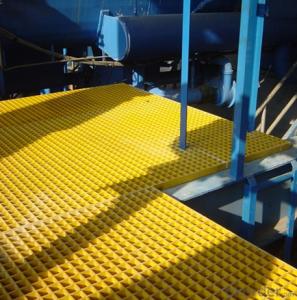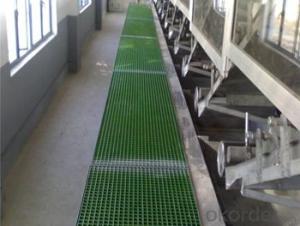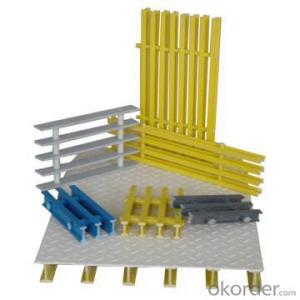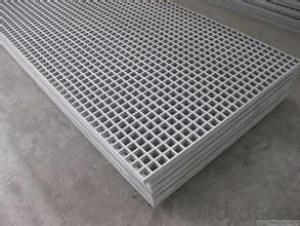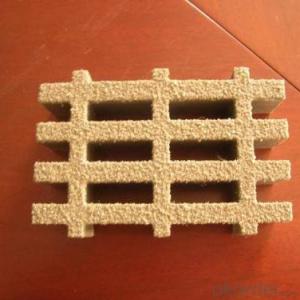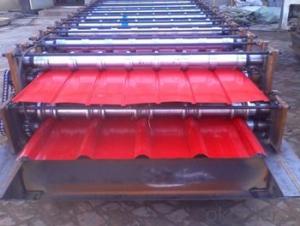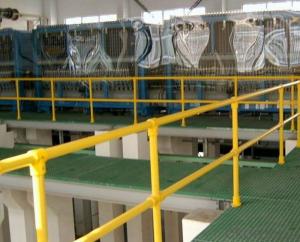FRP Pultrusion Profiles for Transformer and Electric Reactor Insulation Dogbone
- Loading Port:
- Qingdao
- Payment Terms:
- TT or LC
- Min Order Qty:
- 10000 kg
- Supply Capability:
- 200000 kg/month
OKorder Service Pledge
OKorder Financial Service
You Might Also Like
1.Brief Introduction
Trasformer insulation parts series of our company mainly including insulation sheet,i-shape,corner piece and so on.It could be classfied as class F,H and C according to temperature resistant.We can produuce epoxy series,cinyl series and polyester series according to client's requirements.
2.Characteristics
Based on productive technology and long time experience.the advantages of our product as following
1)High mechanical strength.
2)High grade of temperature resistant.
3)Smooth and elegant surface
3.Technical Data Sheet
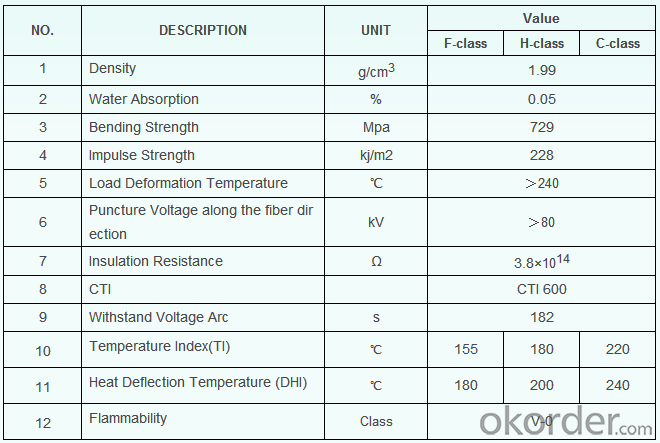
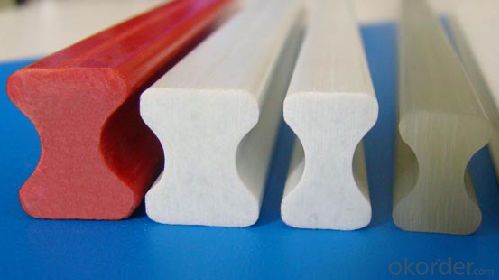
4.FAQ
a.Test Method:All the products have passed the full set of test.especially the related inspection of SGS.Our products have been sold to dozens of countries and regions,What is the most important.our products have passed all the technical inspections of most strict japanese clients.
b.Operative Norm:The operative norm of our product is JB/T10943-2010 "Brace used in Dry-type Transformer"and part of IEC60076.
c.New mold could be made according to customersrequirements.
- Q: Can FRP pultrusion profiles be used in the telecommunications and data communication industry?
- Yes, FRP pultrusion profiles can be used in the telecommunications and data communication industry. These profiles offer several advantages such as high strength-to-weight ratio, corrosion resistance, and electrical insulation properties. They can be used for applications such as cable trays, antenna supports, equipment enclosures, and infrastructure components, providing a durable and reliable solution for the industry's needs.
- Q: How do FRP pultrusion profiles handle torsion loads?
- FRP pultrusion profiles are known for their excellent mechanical properties and high strength-to-weight ratio, making them an ideal choice for handling torsion loads. When subjected to torsion, these profiles are designed to withstand twisting forces and maintain their structural integrity. The key to their ability to handle torsion loads lies in their construction. FRP pultrusion profiles are manufactured by pulling reinforcing fibers, such as fiberglass, through a resin bath and then through a heated die. This process aligns the fibers in the direction of the load, providing exceptional strength and stiffness. In the case of torsion loads, the aligned fibers in the profile's cross-section resist the twisting force by distributing it along the length of the profile. This distribution of force helps prevent localized stress concentrations, reducing the risk of deformation or failure. Additionally, the resin matrix surrounding the fibers acts as a binding agent, holding the fibers together and providing protection against environmental factors such as moisture, chemicals, and UV radiation. This ensures the long-term durability and stability of the profile under torsion loads. Furthermore, FRP pultrusion profiles can be designed with specific cross-sectional shapes and dimensions to enhance their torsional strength. By optimizing the geometric configuration, such as increasing the wall thickness or adding reinforcing ribs, the profiles can be further strengthened to meet the desired torsion load requirements. Overall, FRP pultrusion profiles excel in handling torsion loads due to their inherent properties, manufacturing process, and design flexibility. Their ability to resist twisting forces, coupled with their lightweight nature, makes them a reliable and cost-effective choice for various applications, including construction, infrastructure, aerospace, and automotive industries.
- Q: What is the dimensional stability of FRP pultrusion profiles?
- The dimensional stability of FRP (Fiber Reinforced Polymer) pultrusion profiles is generally very high. This is due to the unique structural characteristics of FRP materials and the pultrusion manufacturing process. FRP pultrusion profiles are made by pulling continuous fibers, such as glass or carbon, through a resin bath and then through a heated die. The resin is typically a thermosetting polymer, which means it undergoes a chemical reaction during the curing process to become a rigid and durable material. The pultrusion process ensures that the fibers are evenly distributed and aligned within the profile, resulting in a highly uniform and consistent material. This uniformity contributes to the dimensional stability of FRP pultrusion profiles. Furthermore, the thermosetting nature of the resin matrix provides excellent dimensional stability. Once the resin is cured, it retains its shape and dimensions even under varying temperature and humidity conditions. This makes FRP pultrusion profiles resistant to warping, shrinking, or expanding, which can occur in other materials like wood or metals. The high dimensional stability of FRP pultrusion profiles makes them ideal for a wide range of applications where precise and consistent dimensions are required. These profiles are commonly used in industries such as construction, infrastructure, transportation, and marine, where their ability to maintain their shape and dimensions over time is crucial for long-term performance and structural integrity.
- Q: What is the cost of FRP pultrusion profiles compared to other materials?
- The cost of FRP (Fiber Reinforced Polymer) pultrusion profiles can vary depending on several factors such as the specific application, size, complexity of design, and quantity required. However, in general, FRP pultrusion profiles tend to be more cost-effective compared to many traditional materials. When compared to materials like steel, aluminum, or wood, FRP pultrusion profiles often provide a lower overall cost, especially when considering long-term savings. While the initial material cost of FRP pultrusion profiles may be slightly higher than some traditional materials, the benefits and advantages it offers can outweigh the price difference. FRP pultrusion profiles are known for their lightweight nature, high strength-to-weight ratio, corrosion resistance, and durability. These characteristics contribute to reducing transportation costs, installation expenses, and maintenance requirements. Additionally, the long lifespan of FRP profiles ensures minimal replacement or repair costs over time. Moreover, the manufacturing process of FRP pultrusion profiles allows for precise customization, eliminating the need for additional machining or fabrication, which can further reduce costs. The ability to incorporate design features such as integral stiffeners, brackets, and fastening points during the pultrusion process eliminates the need for additional assembly steps, ultimately saving time and money. It is important to note that while FRP pultrusion profiles may have a higher upfront cost compared to some materials, the overall cost-effectiveness and long-term benefits make them a favorable choice in many applications. Each project's specific requirements and considerations should be taken into account when evaluating the cost of FRP pultrusion profiles compared to other materials.
- Q: Can FRP pultrusion profiles be used in architectural or decorative applications?
- Yes, FRP pultrusion profiles can be used in architectural or decorative applications. They offer various advantages such as high strength-to-weight ratio, resistance to corrosion and UV radiation, and design flexibility. Additionally, FRP pultrusion profiles can be customized to match specific aesthetic requirements, making them suitable for architectural and decorative purposes.
- Q: Are FRP pultrusion profiles resistant to vibration or shock?
- FRP pultrusion profiles are highly resistant to vibration and shock. The inherent properties of FRP (Fiber Reinforced Polymer) materials make them ideal for applications requiring durability and strength under dynamic loading conditions. The composition of FRP profiles, which typically include a combination of reinforcing fibers and a resin matrix, provides excellent stiffness and damping characteristics. This enables FRP pultrusion profiles to effectively absorb and dissipate vibrations and shock forces, preventing damage or degradation. Additionally, the design flexibility of FRP allows for tailored reinforcement and optimization, further enhancing its resistance to vibration and shock. Therefore, FRP pultrusion profiles are a reliable choice for applications where these properties are crucial, such as in aerospace, automotive, marine, and structural engineering industries.
- Q: Can FRP pultrusion profiles be used in transportation infrastructure, such as bridges or platforms?
- Transportation infrastructure, including bridges and platforms, can effectively utilize FRP (Fiber Reinforced Polymer) pultrusion profiles. These profiles possess several advantageous properties that render them suitable for such applications. To begin with, FRP pultrusion profiles are renowned for their exceptional strength-to-weight ratio. This implies that they provide considerable structural strength while remaining lightweight. This quality is particularly valuable in transportation infrastructure, where weight reduction is crucial for enhancing energy efficiency and minimizing construction expenses. Moreover, FRP pultrusion profiles exhibit a high level of corrosion resistance. Unlike traditional construction materials like steel, FRP does not corrode when exposed to moisture or chemicals. This corrosion resistance makes FRP pultrusion profiles perfect for transportation infrastructure situated in harsh environmental conditions, such as bridges located in coastal areas or platforms susceptible to chemical spills. Additionally, FRP pultrusion profiles offer outstanding durability and longevity. They possess an extended service life and can withstand heavy loads, vibrations, and impacts. This ensures their suitability for high-traffic areas, guaranteeing that transportation infrastructure remains structurally sound and safe for an extended period. Lastly, FRP pultrusion profiles provide excellent design flexibility. They can be manufactured in various shapes and sizes, enabling customized solutions that meet the specific requirements of transportation infrastructure projects. They can be easily molded into intricate geometries, facilitating efficient construction and reducing the need for additional components. In conclusion, the properties of FRP pultrusion profiles make them highly suitable for utilization in transportation infrastructure, such as bridges or platforms. Their exceptional strength-to-weight ratio, corrosion resistance, durability, and design flexibility make them a reliable and cost-effective choice for constructing safe and efficient transportation systems.
- Q: Are FRP pultrusion profiles resistant to mold and mildew?
- Yes, FRP pultrusion profiles are highly resistant to mold and mildew. The non-porous nature of the fiberglass reinforcement and the synthetic resin matrix used in pultrusion manufacturing make these profiles highly resistant to moisture absorption, preventing the growth of mold and mildew.
- Q: Are FRP pultrusion profiles resistant to fungi and mold?
- Yes, FRP pultrusion profiles are highly resistant to fungi and mold. The combination of the materials used in FRP (Fiber Reinforced Polymer) and the manufacturing process make them inherently resistant to biological growth. This makes FRP pultrusion profiles a durable and low-maintenance solution in environments prone to fungal and mold growth.
- Q: Can FRP pultrusion profiles be used for structural applications?
- Yes, FRP pultrusion profiles can be used for structural applications. They are commonly utilized in various industries such as construction, automotive, aerospace, and marine. FRP pultrusion profiles offer high strength-to-weight ratio, excellent corrosion resistance, and durability, making them suitable for structural components like beams, columns, and trusses. Additionally, they can be designed to meet specific load requirements and offer design flexibility.
Send your message to us
FRP Pultrusion Profiles for Transformer and Electric Reactor Insulation Dogbone
- Loading Port:
- Qingdao
- Payment Terms:
- TT or LC
- Min Order Qty:
- 10000 kg
- Supply Capability:
- 200000 kg/month
OKorder Service Pledge
OKorder Financial Service
Similar products
Hot products
Hot Searches
Related keywords












